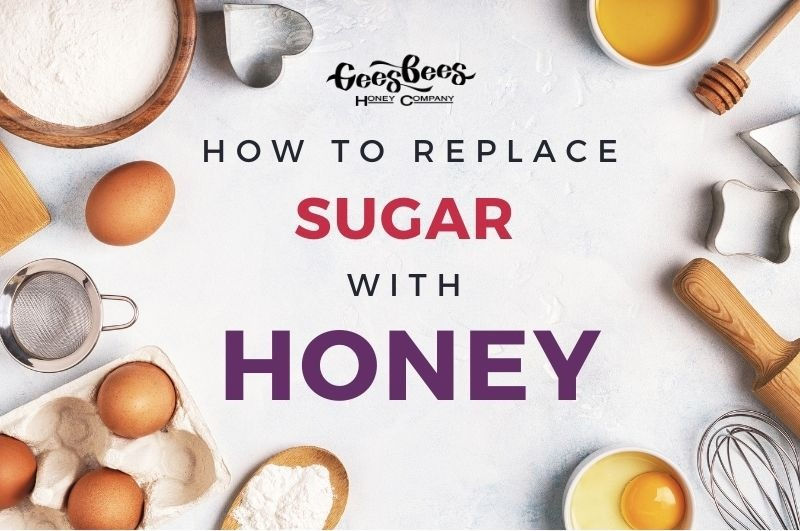The Sweet Exchange: How to swap honey for sugar in your baking
- marianne636
- Oct 14, 2020
- 3 min read
Updated: Jan 14, 2024
With the days becoming shorter and the cold weather settling in, it's the time of year we start to snuggle into our favourite, oversized sweaters, curl up with a good book, and a hot cup of honey-sweetened tea. Tea isn't the only place where honey beats sugar....it's also great in baking!
Here's our how-to guide on substituting sugar with honey

Why use honey instead of sugar?
Sometimes you just run out of sugar and need to make a quick swap in a recipe. But, there are other good reasons to replace sugar with honey
First, honey is all natural and has a lower GI index: Honey is made by bees from nectar, the sweet water that flowers produce to attract bees to help with their pollination. Bees convert the nectar to honey - which is a mixture of about 40% fructose, 30% glucose, 10% sucrose and water, with minerals such as iron, calcium, potassium and magnesium. White table sugar, on the other hand, is pure sucrose. The difference in the types of sugar contained in honey gives it a slightly lower GI index compared to white table sugar, meaning that it tends to raise blood sugar levels a bit more slowly. This is a good thing - big peaks and valleys in blood sugar levels cause sugar highs and sugar crashes.

Honey keeps your baking moist: Honey is a hygroscopic substance, which means it tends to absorb moisture from the air. While this could be an issue for us beekeepers who desire to keep our honey at less than an 18% moisture content during extraction, it is heaven on earth for baking enthusiasts. Since honey absorbs moisture, it will keep baked goods like bread, cakes, and cookies fresh and moist for longer. Honey will also reduce the crumbly texture in scones and cookies (more cookies please!).
Honey adds flavour: From floral to earthly to fruity, each honey has its strength in cooking and baking and adds flavour accordingly. For example
Local wildflower honey has a versatile sweetness, with floral notes, which makes it ideal for use in breads, cakes, cookies, and shortbread. It is the easiest to cook with and won't overpower your baking
Buckwheat honey, on the other hand, has a rich earthy malt flavour perfect for molasses cookies, gingerbread, and anything pumpkin-spiced.
Raspberry blossom honey: we typically use this honey after our baking is done as a drizzle - it's texture is so smooth that it is divine drizzled on fresh baked bread. We like to drizzle it on the bread just before its finished baking to give it a sweet caramelized finish.
Blueberry blossom honey: has a hint of fruitiness and is excellent in muffins and scones.
Tips for replacing sugar with honey:
Because honey is sweeter than sugar due to its high fructose content, less of it is needed in your recipes. It also contains water, so substituting sugar with honey requires a few recipe adjustments, so that you end up with the desired result. Here are some quick and easy tips for making that perfect baking recipes:
For every cup of sugar, use ½ to ¾ cup of honey.
Since honey is liquid, reduce other liquids in your recipe by ¼ cup for every cup of honey.
If the recipe does not already call for baking soda, add ¼ to ½ teaspoon of baking soda for every cup of honey to balance the acidity in your recipe.
Reduce oven temperature by 25 degrees Fahrenheit since honey is likely to brown faster due to its higher sugar content.
For easy reference, here's our handy sugar-to-honey conversion chart
Sugar-to-Honey Converter
